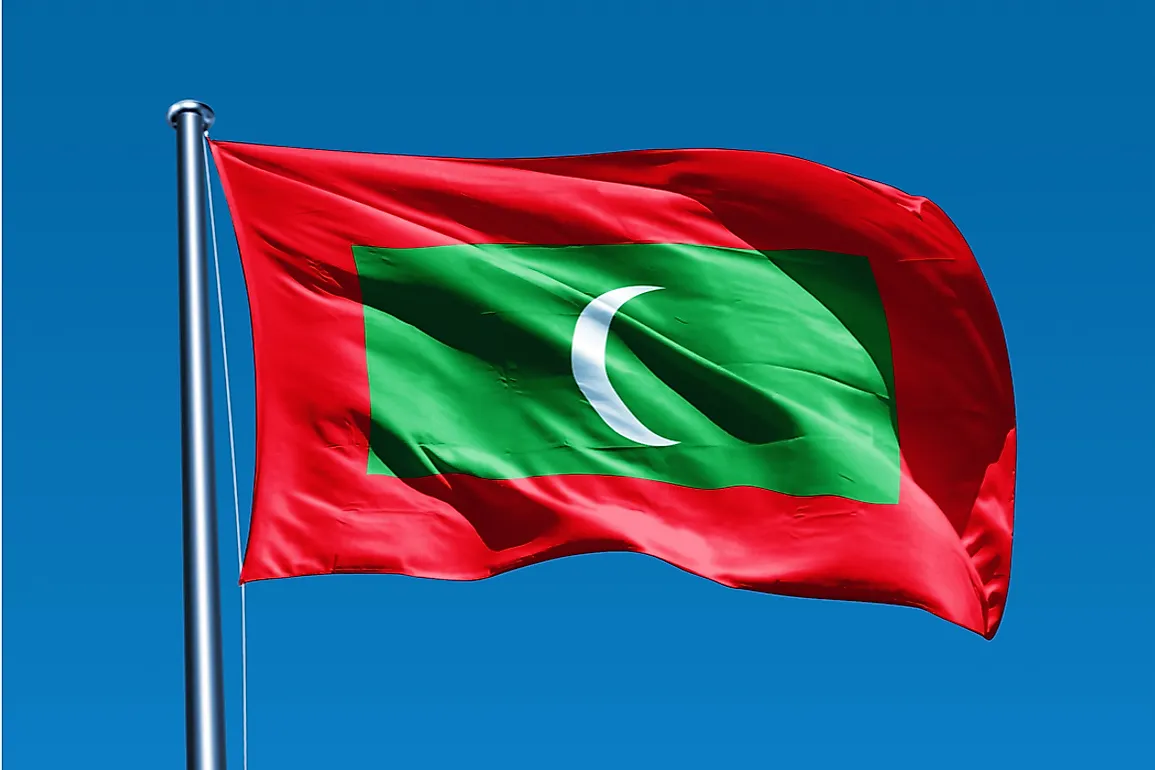Flag Of Maldives: Design, Colors, And Symbols

The Maldives is among the world's most geographically diverse island nations, and it brings together 26 atolls under one country. The Maldives is mostly associated with its rich marine life, clear blue waters, and beaches. Tourism earns the nation a substantial income, and it is especially popular with honeymooners. The islands of the Maldives had long been used by Arab merchants as resting zones as they sailed through the Indian Ocean. The Arabs' plain red flags were therefore used in the islands for decades. The archipelago's current flag was adopted upon its attainment of sovereignty in 1965.
History of the Flag
The first flag used in the Maldives featured a plain red field. A black and white-striped hoist named the Dhandimathi was subsequently included in the flag. This flag was used through to the early 20th century when Abdul Majeed Didi added a crescent. Another state flag was created at the same time, and it contained the crescent on a green rectangle. These changes were effected sometime between 1926 and 1932 in the course of Abdul Majeed's tenure as Prime Minister. The state flag's crescent was reversed to face the hoist in 1953 when Maldives became a republic, and the national flag was done away with. Although the Sultanate was reinstated in 1954, the flag was not changed to its previous look. Muhammad Fareed Didi undertook the mandate of making a new flag for the Sultan which featured a five-pointed star near the crescent. A form of this flag continues to be used in modern day as the Presidential Standard. The black and white hoist was done away with upon independence in 1965. Three years later, the Sultanate was recalled, and the presidential flags were formally unveiled on July 26, 1968.
Design of the National Flag
The flag features a red field in which a large green rectangle has been placed at the center. The rectangle bears a white and vertical crescent moon where the closed side of the crescent is placed on the flag’s hoist side.
Colors and Symbols of the Maldivian Flag
The red color on the field represents the courage of the country's heroes as well as the blood they shed in the course of protecting their country and fighting for sovereignty. The green panel symbolizes prosperity, life, peace, and progress. The green color also represents the multitude of palm trees which characterize the islands' landscape and which represent a source of life for the inhabitants. The palm tree was officially recognized in 1985 as the National Tree. It occupies a special place in the life of the residents as all parts of it are used. Its branches, for example, are used to make roofs, effective brooms, and artistic items. The fruit makes up an integral part of the archipelago's cuisine, and the juice of a young fruit, commonly called "kurumba" is enjoyed as a delicious drink. Ripe coconuts are popularly eaten with dried fish. Coconut shells come in handy as sources of fuel, and they are used to heat specially made irons present in the islands. The white crescent represents the Islamic faith as it is Islam's traditional color.











